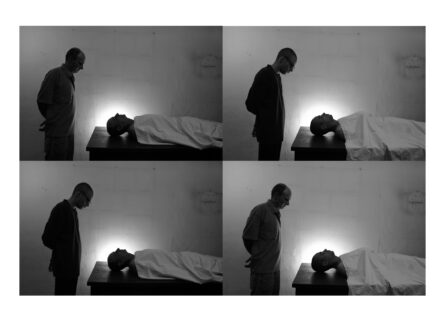Sebastián Restrepo
Exchange grant Taller 7 - Hangar
october - november 2018

The work of Sebastián Restrepo has a selfreferential, anecdotal, experiential, and biographical component. But this component passes to a second plane in which his life becomes the territory for the crossings of the game and at the same time, one more of the lines that cross; a line that is divided into a more series when he activates the machine, because his is a work-machine that is put into motion by chance. For him, his ancestors, the houses in which they have lived and those in which his relatives live, his childhood house, long walks through the city streets, the people he has known, the books he has read, and everything that he comes across in his daily life constitute more lines, more divisions of the line that is his life. In this way his work refers the notion of the archive and, like Atlas Mnemosyne by Aby Warburg, it reveals a search as rigorous as it is impossible: a cartographic survey of a time, or of time itself. We could think of each of the elements that composes Sebastián’s work as one of the photographs that compose that cryptic German art historian’s book, which proposes to trace a conductive thread of a part, of a feature, of a thread of European history through images. As undertakings, both are unattainable, delirious, hyperaesthetic: How is it possible to plot a map of continuities and transformations throughout time? How is it possible to capture the act of becoming? This impossibility is in fact the work’s greatest fortune, in both cases. This indetermination is what compels those attempts towards permanence and to an opening of possible futures. Sebastián has spoken about his encounter with Warburg, and maybe he recognized the historian’s work as being close to his own, even though his mission (Sebastián’s) is substantially more modest: from the cartography of a continent to that of a life, nevertheless, one rich with lines that overrun their individual spatial-temporal coordinates and ascend to a priori and a posteriori space-times that cross one another without a starting or ending point. How could one not think of a rhizomatic structure? (From the essay Sebastián Restrepo or the Work of Art as an Impossible Map of Chaos, written by Elena Acosta, translated by Max Schnuer and Justin Vahala. From the book Casus edited and published by Taller Siete).
